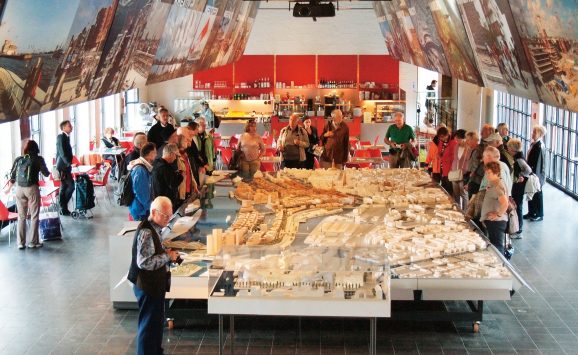The Ito Laboratory is researching civic pride. Civic pride literally means “pride in one’s city.” It implies not just a sense of bragging, but a sense of participation in, and responsibility for, making one’s city better place. Citizens who learn more about their cities and are personally involved in their cities are rewarded with joy when their cities grow in appeal and attractiveness.
In Victorian England of the 19th century, buildings were considered a symbol of civic pride. During this era, the trend of civic pride in cities like Leeds and Liverpool was driven by the sense among residents that they had built their cities with their own hands, and they called for, and contributed to, the construction of public buildings.
The surge in the urban renaissance which began in the 1990s has seen attention return once more to the importance of civic pride.
The Ito Laboratory conducts research on civic pride in Japan, comparing with other regions in the world. In particular, they scientifically analyze the emotional aspects, and aim to contribute to the creation of livable cities, where people can continue to live for a long time, rather than just focusing on convenience and economic efficiency.

The Ito Laboratory investigates the state of civic pride in Japanese cities, focusing in particular on the relationship between the built environment, and civic pride.
The Japanese language does not have a word or phrase that exactly captures meaning of “civic pride.” However, the trend in Japanese civic pride can be gauged through an analysis of such factors as “attachment,” “participation,” “identity” and “desire to remain.” A survey of residents in Imabari City in Ehime Prefecture found that those who rated the built environment of the city center highly had a strong sense of participation in their city, and those who rated the built environment encompassing sightseeing locations and other famous locations had a strong sense of attachment to their city. It is safe to say that higher civic pride contributes to the conservation and creation of a better built environment that will be highly rated by its residents.
“It is important to adopt both a bird’s-eye view of city planning, as well as a ground’s-eye view that takes into consideration what sort of city the residents want to live in,” says Professor Ito.
The researchers and students in the Ito Laboratory also study communication and its role in shedding light on residents’ feelings about the physical arrangement of their city.
Cities are not something to be decided upon by decision-makers who are completely removed from residents; rather, they should be shaped by the involvement of each and every person who lives in them. And in order to ensure that the people who live in cities are aware of this and will contribute to improving the quality of life in their own city, the researchers and students in the Ito Laboratory are studying the relationship between civic pride and the built environment.
■ Main research content